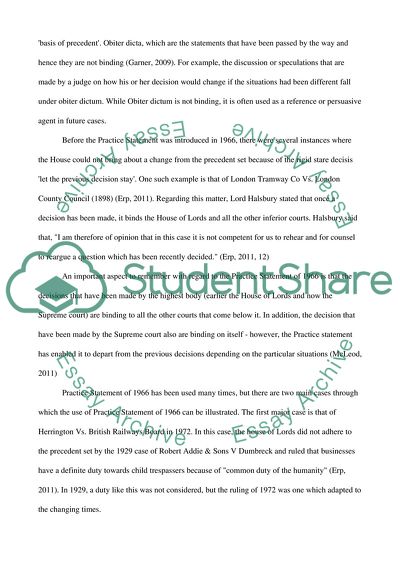Cite this document
(Critically assess whether the UK Supreme Court's approach to the use Essay - 1, n.d.)
Critically assess whether the UK Supreme Court's approach to the use Essay - 1. Retrieved from https://studentshare.org/law/1783060-critically-assess-whether-the-uk-supreme-courts-approach-to-the-use-of-practice-statement-1966-should-be-more-racial-than-that-of-the-house-of-lords-in-order-to-achieve-reform-of-the-law
Critically assess whether the UK Supreme Court's approach to the use Essay - 1. Retrieved from https://studentshare.org/law/1783060-critically-assess-whether-the-uk-supreme-courts-approach-to-the-use-of-practice-statement-1966-should-be-more-racial-than-that-of-the-house-of-lords-in-order-to-achieve-reform-of-the-law
(Critically Assess Whether the UK Supreme Court'S Approach to the Use Essay - 1)
Critically Assess Whether the UK Supreme Court'S Approach to the Use Essay - 1. https://studentshare.org/law/1783060-critically-assess-whether-the-uk-supreme-courts-approach-to-the-use-of-practice-statement-1966-should-be-more-racial-than-that-of-the-house-of-lords-in-order-to-achieve-reform-of-the-law.
Critically Assess Whether the UK Supreme Court'S Approach to the Use Essay - 1. https://studentshare.org/law/1783060-critically-assess-whether-the-uk-supreme-courts-approach-to-the-use-of-practice-statement-1966-should-be-more-racial-than-that-of-the-house-of-lords-in-order-to-achieve-reform-of-the-law.
“Critically Assess Whether the UK Supreme Court'S Approach to the Use Essay - 1”. https://studentshare.org/law/1783060-critically-assess-whether-the-uk-supreme-courts-approach-to-the-use-of-practice-statement-1966-should-be-more-racial-than-that-of-the-house-of-lords-in-order-to-achieve-reform-of-the-law.


